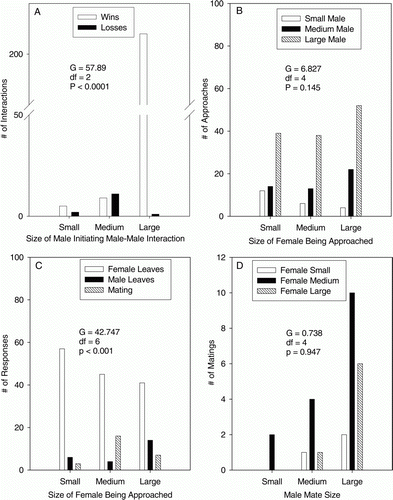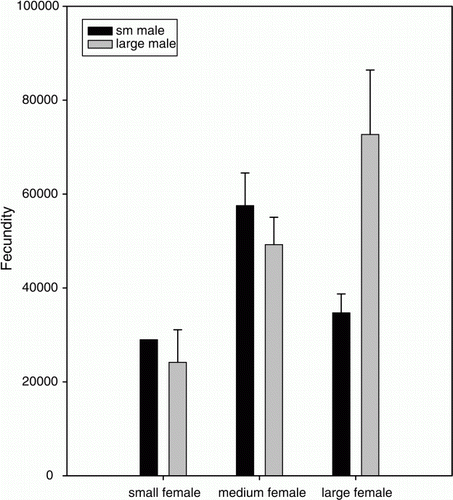Figures & data
Figure 1. The four panels summarize the results from male-male competitive interactions, male-female courtship interactions, and mating by Panulirus guttatus. The G-statistic, degrees of freedom (df) and p-value for each corresponding contingency test are displayed within each panel. (A) Results from a male–male competition experiment testing whether the winner of the contest was independent of male size. (B) Results of courtship interactions testing whether courtship by males differed among males and females of different sizes. (C) Results of female response to courtship by males of different sizes. (D) Results of mate choice testing whether different size classes of females preferred to mate with males of a particular size.

Figure 2. The effect of female size and male size on fecundity (no. eggs/clutch) of Panulirus guttatus. ANOVA results indicate that fecundity depends on both male and female size; specifically, matings between large females and small males produced significantly fewer eggs.
